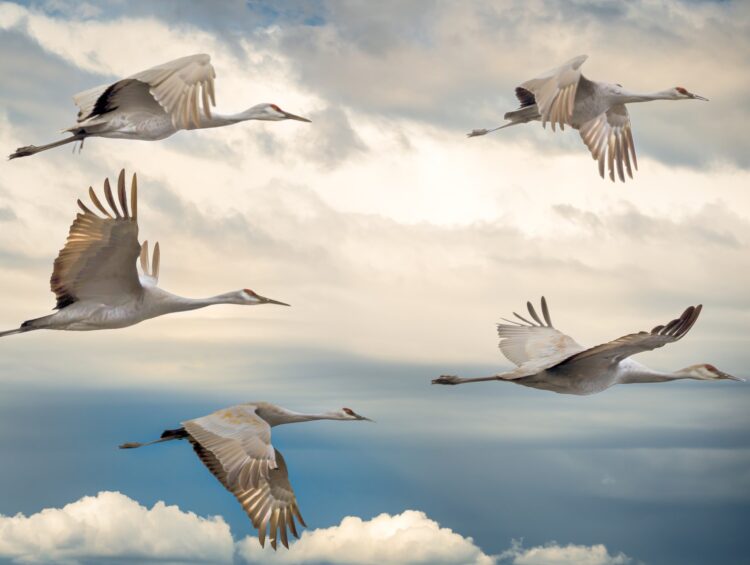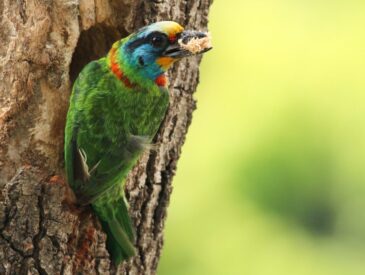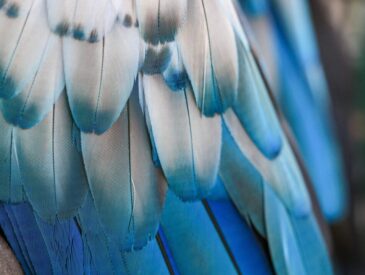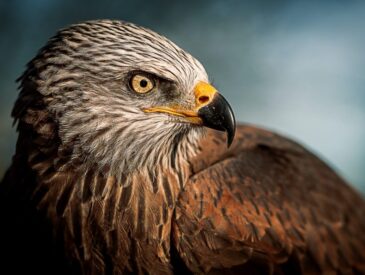Bird migration is one of nature’s most magnificent phenomena, encapsulating the essence of survival, adaptation, and the interconnectedness of ecosystems. Each year, billions of birds traverse vast distances across continents, guided by an innate compass that has intrigued and mystified humans for centuries.
This incredible journey, driven by a complex interplay of environmental, genetic, and survival factors, is not only a testament to the resilience and ingenuity of these winged wanderers but also highlights the fragility of their existence in the face of burgeoning environmental challenges.
In our article, “The Great Journey: Why Birds Migrate and How We Can Support Them,” we embark on a comprehensive exploration of this awe-inspiring phenomenon. From the deep-rooted scientific reasons that trigger these epic voyages to the perilous obstacles these avian travelers face, we delve into the heart of bird migration.
Moreover, we will traverse the globe virtually, pinpointing famous destinations where the beauty and power of bird migrations are displayed in full splendor, offering an opportunity for enthusiasts and conservationists alike to witness and participate in this natural spectacle.
As we unfold the layers of this journey, our narrative extends beyond mere observation, delving into the critical role humans play in this intricate ecological ballet. The conservation efforts, the initiatives undertaken to preserve migratory routes, and the everyday actions that each of us can adopt to support these feathered voyagers form a crucial part of our discourse.
Our journey through the skies is not just an exploration of a natural phenomenon; it’s a call to action, a reminder of the delicate balance that sustains life on our planet, and an invitation to become active participants in preserving the great journey of our avian co-inhabitants.
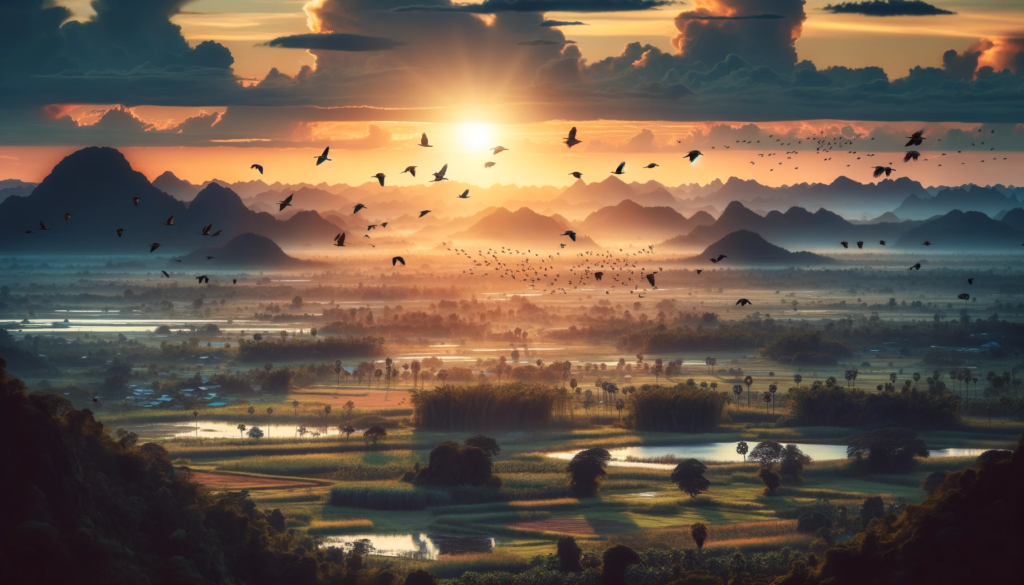
The Phenomenon of Bird Migration
Understanding the Scale and Significance Bird migration, an annual journey undertaken by various bird species, is one of the most awe-inspiring events in the animal kingdom. Picture this: billions of birds, from tiny hummingbirds to majestic eagles, taking to the skies in a synchronized global movement, crossing continents and oceans. This phenomenon is not just a testament to the wonders of nature but also a crucial element in the ecological balance, contributing to everything from pollination to pest control.
The Reasons Behind Migration
The primary driver of bird migration is the search for optimal living conditions, particularly food availability and suitable breeding grounds. Birds that breed in the temperate zones of the Northern Hemisphere often migrate southwards as winter approaches, seeking warmer climates where food is abundant. This journey is ingrained in their genetic makeup, a remarkable navigation system that involves celestial cues, Earth’s magnetic field, and even olfactory markers.
Navigating the Skies: An Avian Feat
The navigation skills of migratory birds are nothing short of extraordinary. Some species, like the Arctic tern, embark on a pole-to-pole journey, the longest migration of any animal. These birds rely on a combination of the sun, stars, Earth’s magnetic field, and even polarized light patterns to find their way. This ability to traverse thousands of miles with precision highlights the complexity and sophistication of their navigational skills.
The Evolutionary Aspect
Migration is not a static behavior but an evolutionary response to environmental changes and survival challenges. Over generations, birds have developed physiological adaptations, such as increased fat storage for energy and enhanced vision for navigation. These adaptations are continually evolving, showcasing the dynamic nature of this survival strategy.
The Impact of Climate Change
Climate change poses a significant threat to migratory birds, altering their traditional routes and timings. Changes in temperature and weather patterns affect food availability, making it harder for birds to find sustenance along their journey. Additionally, altered breeding seasons and habitat loss further challenge their survival.
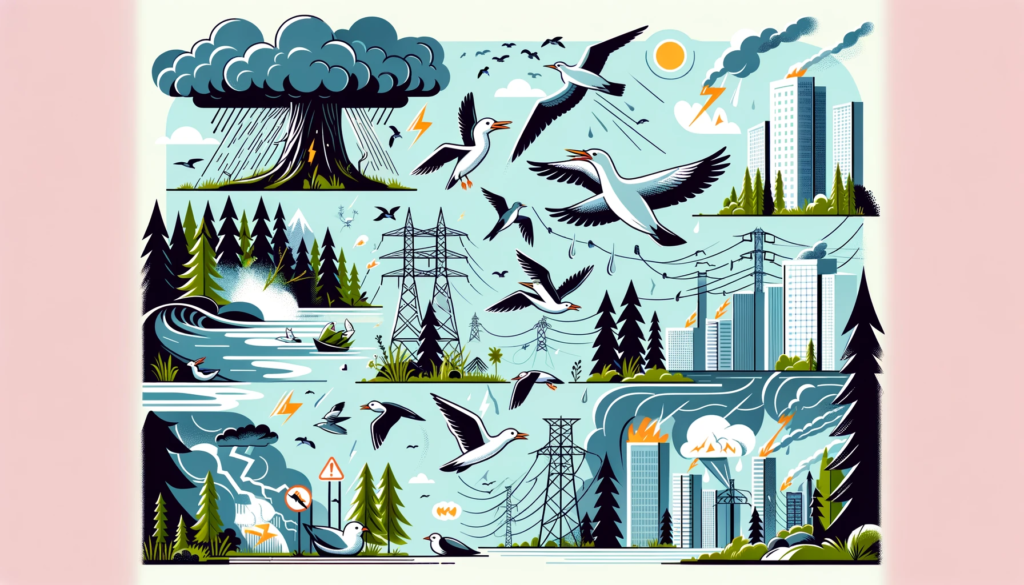
Challenges Birds Face During Migration
Navigating Natural and Man-Made Obstacles
Bird migration, while a natural marvel, is fraught with a myriad of challenges that test the limits of these resilient creatures. The journey is perilous, with dangers lurking at every turn, from natural predators to man-made hazards.
Weather-Related Hazards
One of the most significant natural challenges is extreme weather conditions. Migratory birds often encounter storms, strong winds, and temperature fluctuations, which can be disorienting and physically taxing. Severe weather events, becoming more frequent due to climate change, can lead to exhaustion, starvation, and even death for these birds.
Habitat Loss and Fragmentation
As birds traverse continents, they rely on specific habitats for rest and nourishment. However, widespread deforestation and habitat destruction have dramatically reduced these critical stopover sites. Without these refuges, birds struggle to complete their journey, leading to declining populations in some species.
The Threat of Urbanization
Urban environments pose a unique set of challenges. Skyscrapers, communication towers, and brightly lit cities create disorienting light pollution and physical barriers. Window collisions, particularly in tall buildings, are a significant cause of mortality for migratory birds.
Peril of Power Lines and Wind Turbines
Power lines and wind turbines, while essential components of modern infrastructure, are deadly obstacles for birds. Collisions with these structures are common and contribute to substantial migratory bird mortality every year.
The Role of Pesticides and Pollution
Pesticides and other pollutants also impact migratory birds. Chemicals used in agriculture can poison birds directly or indirectly by contaminating their food sources. Pollution in water bodies along migratory routes can lead to habitat degradation, affecting the health and survival of these birds.
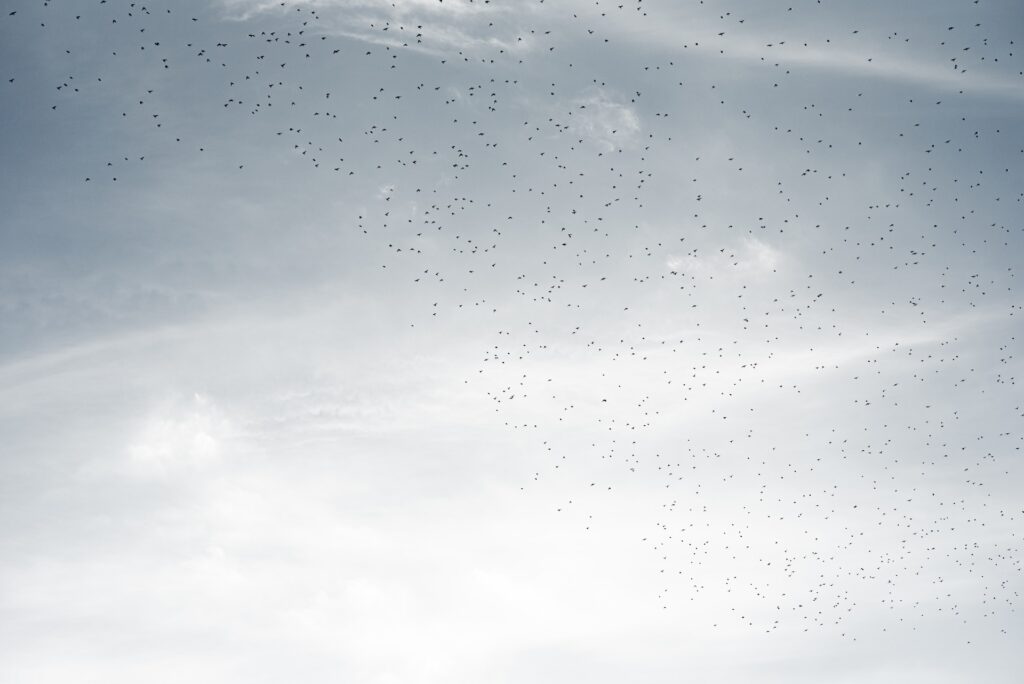
Top Destinations to Witness Bird Migration
Experiencing the Spectacle Around the World
The migration of birds is not just a phenomenon to be studied; it’s a spectacle to be witnessed. Across the globe, there are numerous destinations where one can observe the awe-inspiring sight of birds in their migratory journey. These locations offer unique vantage points to witness the beauty and endurance of these avian travelers.
North America: The Great American Flyway
In North America, the Great American Flyway stretches from the Arctic to Patagonia, offering incredible bird-watching opportunities. Places like Point Pelee in Canada and Cape May in New Jersey are renowned for their spectacular bird migration views, with species such as warblers, eagles, and shorebirds.
Europe: The Mesmerizing Journey Across the Mediterranean
Europe provides a corridor for birds migrating between the northern breeding grounds and the southern wintering areas. The Strait of Gibraltar in Spain is a prime location, where one can witness raptors and storks soaring over the narrow crossing between Europe and Africa.
Africa: The Serengeti and Beyond
Africa, particularly the Serengeti, is famed for its terrestrial migrations, but its skies are equally bustling. The Rift Valley hosts an array of birds, including flamingos and pelicans, making it a bird-watcher’s paradise.
Asia: The Mystical Routes Over the Himalayas
The Himalayas serve as a challenging route for migratory birds in Asia. The region’s high-altitude lakes and wetlands, like the Rann of Kutch in India, attract numerous species, including cranes and waterfowl, offering a breathtaking spectacle.
South America: The Diverse Birdlife of the Amazon
In South America, the Amazon Rainforest and Pantanal Wetlands are hotspots for bird migration. These biodiverse regions support a vast array of species, from colorful macaws to majestic harpy eagles.
Australia: A Birdwatcher’s Dream
Australia’s varied landscapes, from coastal regions to inland deserts, provide fantastic opportunities to observe migratory birds, including the iconic wader migrations in places like Broome.
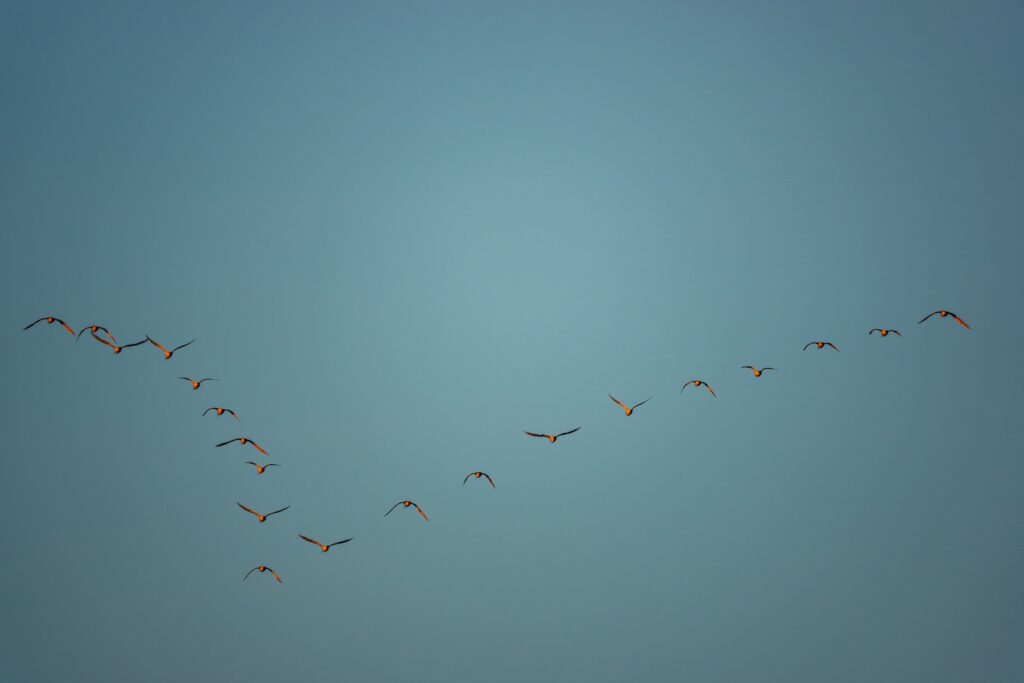
Human Efforts in Supporting Migratory Birds
The Global Conservation Movement
The conservation of migratory birds is a global challenge that has sparked a myriad of initiatives and efforts across the world. Recognizing the importance of these creatures to the ecosystem, conservationists, governments, and communities have come together to safeguard their journeys.
Protecting Critical Habitats
One of the foremost strategies is the protection of key habitats along migratory routes. This includes the establishment of bird sanctuaries, national parks, and protected areas that offer safe havens for birds during their long journeys. Efforts are also made to restore and maintain wetlands, forests, and grasslands that are crucial for the survival of migratory species.
Policy and Legislation
Significant progress has been made through policy and legislation at both national and international levels. Agreements like the Migratory Bird Treaty Act in the United States and the African-Eurasian Migratory Waterbird Agreement are examples of legal frameworks aimed at protecting migratory birds.
Research and Monitoring
Understanding migration patterns is key to effective conservation. Organizations and researchers utilize tracking technologies, such as satellite tagging and banding, to study migration routes and identify changes in patterns due to environmental factors. This data is critical for informing conservation strategies.
Public Awareness and Community Engagement
Raising public awareness about the plight of migratory birds is crucial. Educational programs, bird-watching events, and citizen science projects involve communities and help foster a sense of stewardship towards these birds.
Tackling Climate Change and Pollution
Addressing broader environmental issues like climate change and pollution is integral to protecting migratory birds. Efforts to reduce greenhouse gas emissions, combat deforestation, and control the use of pesticides contribute significantly to creating a safer environment for migratory birds.
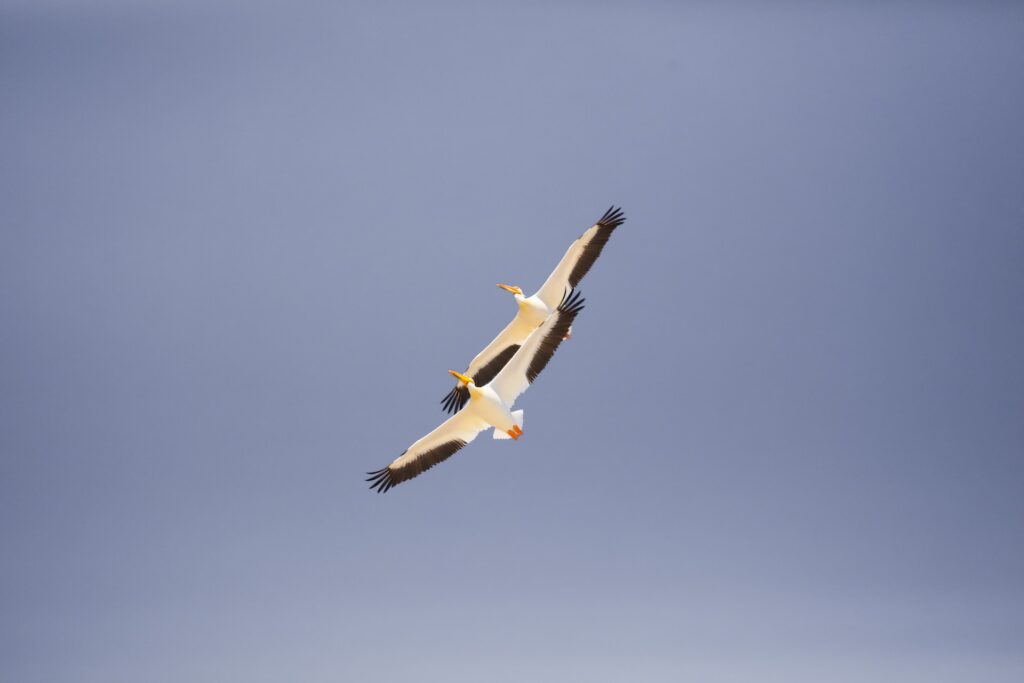
What You Can Do to Help Migratory Birds
Small Actions, Big Impact
Each of us can play a vital role in supporting the journey of migratory birds. Here are some practical steps that individuals can take to make a difference:
Create Bird-Friendly Environments
- Provide Food and Water: Set up bird feeders and water baths in your garden or balcony. This offers a much-needed respite for migratory birds, especially in urban areas.
- Plant Native Vegetation: Planting native trees, shrubs, and flowers creates a natural habitat for birds to feed and rest. Native plants attract native insects, a crucial food source for many bird species.
- Avoid Chemical Pesticides: Opt for natural pest control methods to keep your garden safe for visiting birds.
Reduce Hazards
- Prevent Window Collisions: Make your windows visible to birds by using decals or bird tape. This helps reduce the risk of birds flying into windows.
- Keep Cats Indoors: Domestic cats are a significant threat to birds. Keeping your cats indoors, especially during migration seasons, can save many bird lives.
Support Conservation Efforts
- Participate in Citizen Science Projects: Engage in bird counting projects like the Audubon Society’s Christmas Bird Count or eBird. Your observations contribute valuable data for bird conservation.
- Donate to Conservation Organizations: Financial support for organizations working in bird conservation helps fund research, habitat protection, and education programs.
Advocate and Educate
- Raise Awareness: Share information about migratory birds and their challenges with your community. Awareness leads to action.
- Advocate for Bird-Friendly Policies: Support local and national policies that aim to protect migratory birds and their habitats.
Read Also: “Most Beautiful Birds in the World“
Conclusion
The Collective Responsibility to Protect Migratory Birds
As we conclude our exploration of bird migration in “The Great Journey: Why Birds Migrate and How We Can Support Them,” it’s clear that the phenomenon of bird migration is not just a marvel of the natural world, but a crucial element of our global ecosystem. The challenges these birds face are many, but so are the opportunities for us to make a positive impact. From creating bird-friendly environments to supporting global conservation efforts, each action contributes to the survival and well-being of migratory birds. As stewards of the earth, it is our collective responsibility to ensure that the skies remain friendly and navigable for our feathered friends, preserving the wonder of their great journey for generations to come.
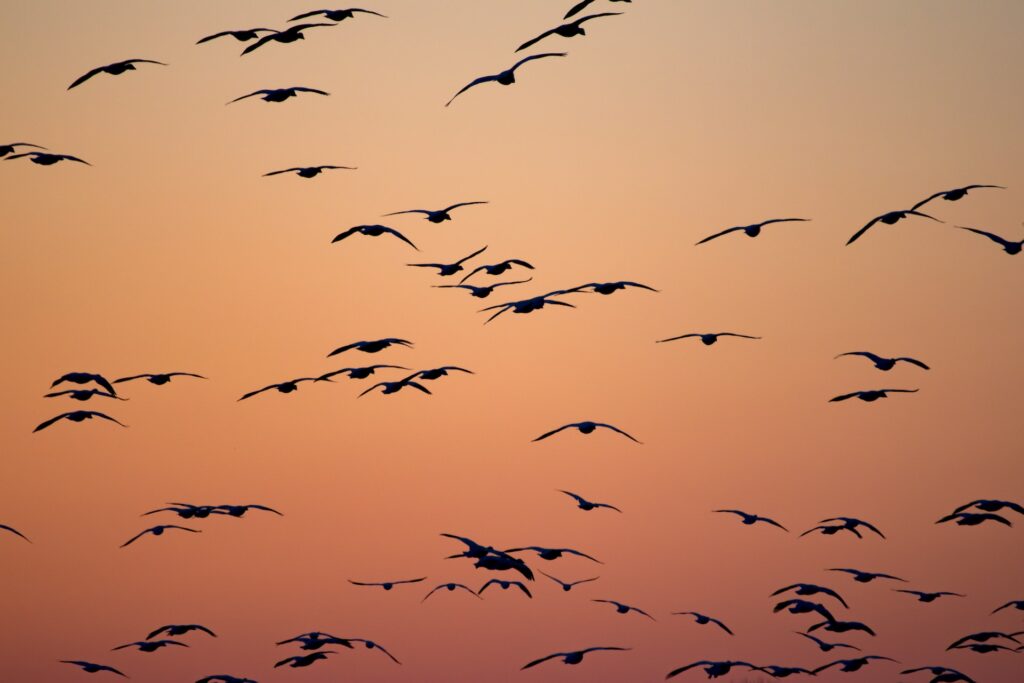
FAQs on Bird Migration
- What Triggers Bird Migration?
- Answer: Bird migration is primarily triggered by environmental cues such as changes in daylight length, temperature, and food availability, guiding them to move to areas with more favorable living conditions.
- How Do Birds Navigate During Migration?
- Answer: Birds use a combination of celestial cues, Earth’s magnetic field, visual landmarks, and internal biological mechanisms to navigate during their migration.
- What Are the Main Challenges Birds Face During Migration?
- Answer: The main challenges include extreme weather conditions, habitat loss, human-made obstacles like buildings and power lines, and threats from predators.
- Can Climate Change Affect Bird Migration?
- Answer: Yes, climate change can alter bird migration patterns by affecting food availability, breeding times, and migratory routes.
- How Far Can Migratory Birds Travel?
- Answer: The distance varies by species; some, like the Arctic tern, travel over 25,000 miles annually, while others migrate shorter distances.
- What Can I Do to Help Migratory Birds?
- Answer: You can create bird-friendly environments, reduce hazards like window collisions, support conservation efforts, and raise awareness about their plight.
- Are There Any International Laws to Protect Migratory Birds?
- Answer: Yes, there are international treaties like the Migratory Bird Treaty Act and the African-Eurasian Migratory Waterbird Agreement that protect migratory birds.
- What Is the Best Time to Observe Migratory Birds?
- Answer: The best time varies by region but generally occurs during the spring and fall when birds are en route to and from their breeding and wintering grounds.

